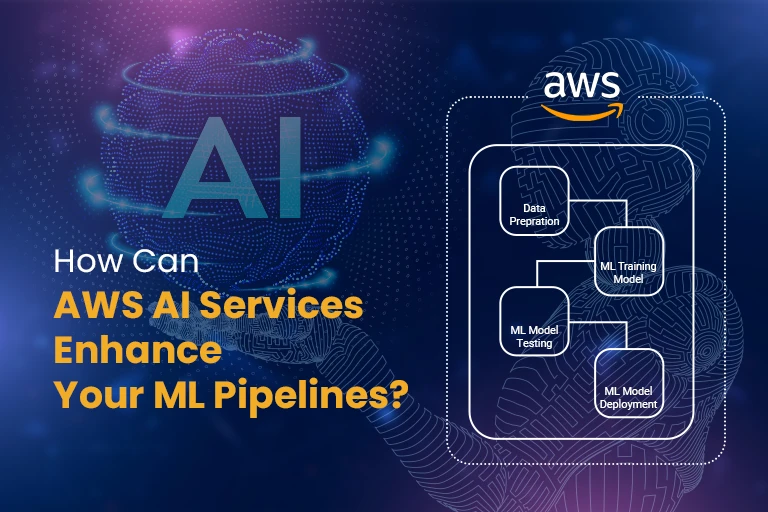
How Can AWS AI Services Enhance Your ML Pipelines?
This blog highlights how AWS Artificial Intelligence (AI) services, powered by pre-trained machine learning algorithms, can enhance your ML pipelines without requiring deep coding or data engineering skills. These ready-to-use AI services are designed to seamlessly integrate with your business applications, enabling you to solve common challenges like automation, prediction, and process optimization. Drawing from the AWS AI Practitioner (AIF-C01) course, this blog shows how these services empower businesses to easily add AI capabilities and address real-world use cases efficiently.
Benefits of AWS AI for Practitioners
As AI becomes the norm of all technological interactions, AI literacy has become an important skill set for all professionals. Without any formal prerequisites, AWS AI Practitioner(AIF-C01) is the perfect exam for anyone looking to solidify their foundational understanding of AWS AI, ML, and generative AI (gen AI) technologies and applications.
The exam helps you build knowledge on the breadth of AI framework and its best practices for optimization, such as:
- Preparing data: how to prepare high-quality data for AI implementation
- Selecting the right AWS AI services: how to select the appropriate services that match the business goal of real-world use cases
- Integrating with other AWS services: how to integrate AI services with other AWS services for specific use cases
- Monitoring and improving performance: how to monitor AI models for performance and compliance
Professionals in roles such as business leaders, sales and marketing professionals, and product managers can take advantage of the knowledge of this exam to use AI responsibly to drive efficiencies, obtain timely and accurate insights, and drive informed decisions within their organization.
Overview of AWS AI services
AI is an umbrella term that includes the sub-disciplines ML, deep learning (DL), and gen AI. AWS offers a diversified portfolio of AI services to cover wide a range of capabilities:
- Pre-trained AI services for vision, speech, language, and recommendations
- Generative AI services like Amazon Bedrock for deploying foundational models,
- Customizable machine learning services for building, training, and deploying ML models tailored to specific business needs.
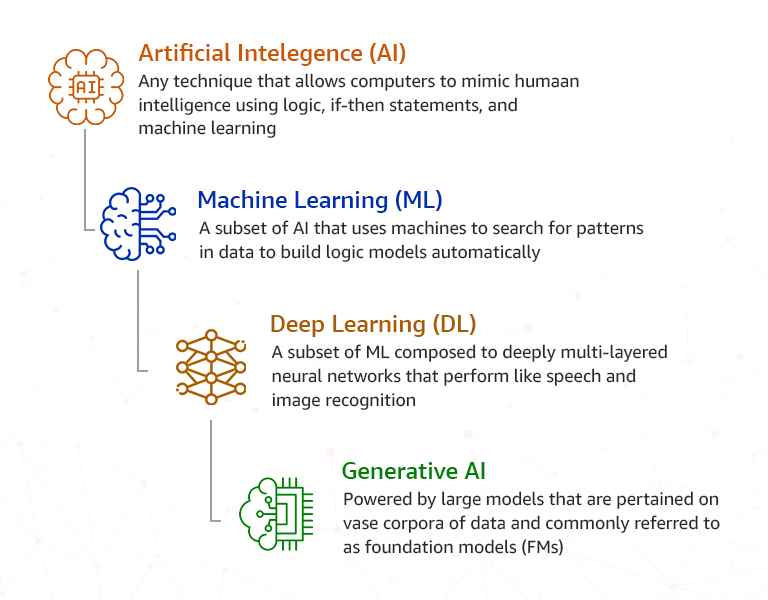
Most of the AWS AI services are fully managed—AWS manages these services so that users can focus on application building only. The services can be deployed across multiple AWS regions and availability zones and support both real-time and batch data processing.
Summary of AWS AI services
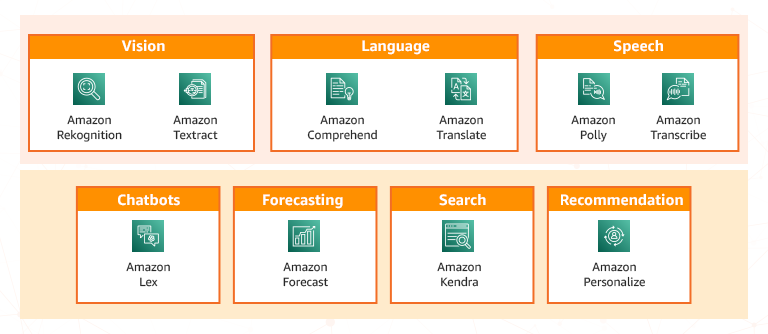
- Amazon Rekognition: an image and video analysis service that adds advanced computer vision capabilities to applications
- Amazon Textract: an intelligent document processing service that can accurately extract text and data from documents
- Amazon Comprehend: an NLP service that can analyze text for key phrases and analyze sentiment
- Amazon Translate: a neural machine learning service that can translate a large volume of text in one language to another language.
- Amazon Transcribe: an automatic speech recognition service that can convert speech to text
- Amazon Lex: an service that enables developers to build and deploy conversational AI interfaces for any application
- Amazon Forecast: a time-series forecasting service that forecasts business outcomes easily and accurately using machine learning
- Amazon Kendra: an enterprise search service powered by ML to find information across a variety of data sources, including documents and knowledge bases
Note: Amazon Forecast is no longer available to new customers. Existing customers of Amazon Forecast can continue to use the service as normal
AWS Gen AI solutions
AWZ provides the flexibility to select from a range of generative AI services through its gen AI stack with features critical to deploying generative AI applications tailored to users’ business needs. These services and tools help build, deploy, and manage generative AI models. All of these services are built with security and governance that meet the standards of most regulated industries. As most of these services are managed, users benefit from low operational costs.
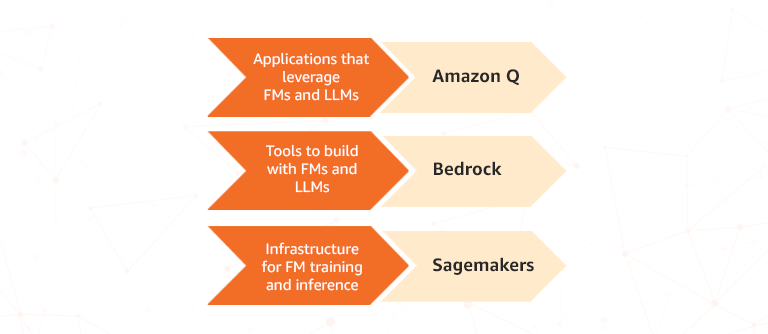
Check these factors to decide which service best suits your needs.
- What you’re trying to do
- How much choice you need in the foundation models that you use
- The degree of customization you need in your generative AI applications
- The expertise within your organization
Gen AI on SageMaker
SageMaker is a suite of products that provides end-to-end capabilities to build, train, and deploy ML models quickly, all in one place. SageMaker integrates with Bedrock to allow fine-tuning of large language models available through Bedrock. Here are some SageMakers features that help in deploying generative AI applications.
SageMaker JumpStart: an ML hub with foundational models (FMs), built-in algorithms, and prebuilt ML solutions
- SageMaker Studio: an integrated development environment (IDE) that provides a single web-based visual interface to perform all ML development steps.
- SageMaker Pipelines: a serverless workflow orchestration service that allows users to create, automate, and manage end-to-end ML workflows. Users can use either the drag-and-drop UI or code (Python SDK, APIs).
On December 03, 2024, Amazon SageMaker was renamed to Amazon SageMaker AI. Here’s the list of SageMaker AI features.
Gen AI on Bedrock
Bedrock provides FMs from Amazon (e.g., Titan) and popular third-party providers (e.g., AI21 Labs, Anthropic, Cohere, and Stability AI) for building and scaling AI applications. Further, Bedrock’s Model Evaluation feature helps you evaluate, compare and select the best FM for your use case.
The following are some of the benefits of using Bedrock:
- Determine the best model for your use case
- Adapt models to specific tasks and domains with training data
- Experiment with prompts and configurations
- Prevent inappropriate or unwanted content
- Improve your FM-based application’s efficiency and output
Here are some Bedrock features that help build secure gen-AI applications:
- Bedrock Guardrails: Bedrock safety-mechanism that helps developer build secure and responsible AI
- Bedrock PartyRock (also known as Amazon Bedrock Playground): an interactive environment for experimenting and deploying generative AI models. It provides a collaborative space for testing different models and configurations before deploying to production.
- Bedrock Studio (renamed to Amazon Bedrock IDE): a web-based interface that enables developers to experiment with and build generative AI applications.
Gen AI on Amazon Q
Amazon Q is a generative AI assistant for businesses and developers to query data with NLP. Amazon Q Developer helps developers by providing code suggestions and recommendations in real-time. Amazon Q Business can help employees leveraging their internal data to find answers to technical questions and automate repetitive tasks.
Read: The Basics and Benefits of Network Security
AWS AI-powered cloud solutions and their workflows
AWS offers tailored AI-powered solutions to fit different use cases. After completing the AWS AI Practitioner(AIF-C01) course, you will have a solid understanding of how to integrate different AWS AI services to match the business needs of real-world scenarios. Here are some common use cases.
Personalized Customer Experiences
Positive customer experience can improve revenue growth. You can use Amazon Personalize and generative AI (Bedrock and SageMaker) to deliver tailored product recommendations, personalized marketing campaigns, or adaptive learning paths based on individual customer preferences and behaviours.
Example use case: The following diagram illustrates the architecture and workflow for delivering a personalized experience for news readers that intelligently recommends articles to interested users within seconds of the article being published.
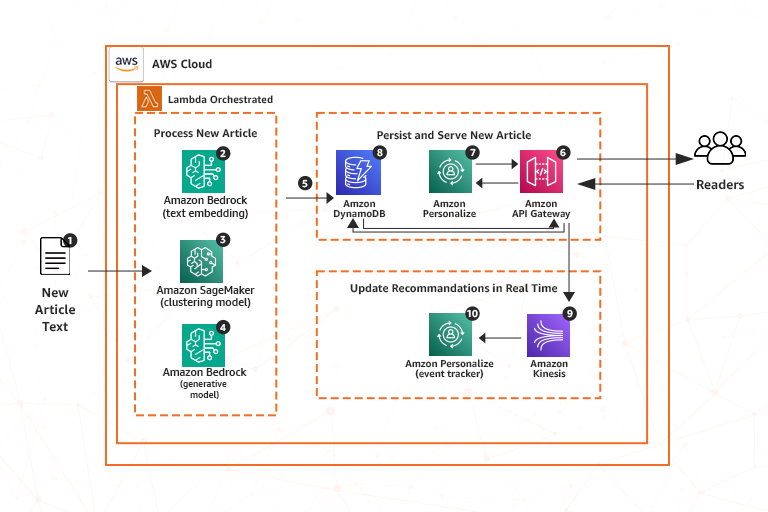
Content Creation and Summarization
Content creation and summarization is often a time-consuming process. Besides, summarization is also prone to subjectivity. You can use AWS NLP services such as Textract and Comprehend with AWS generative AI services for automatic content creation and summarization. Generate blog posts, articles, or marketing materials or summarize lengthy reports, documents, or meeting notes into concise, actionable insights for quicker decision-making.
Services: Amazon Bedrock, Amazon Textract, Amazon Comprehend
Example use case: The following diagram illustrates the architecture and workflow for automated contract processing for a finance team responsible for analyzing contract agreements and entering key contractual data into an Excel workbook in batches of a hundred contracts at a time.
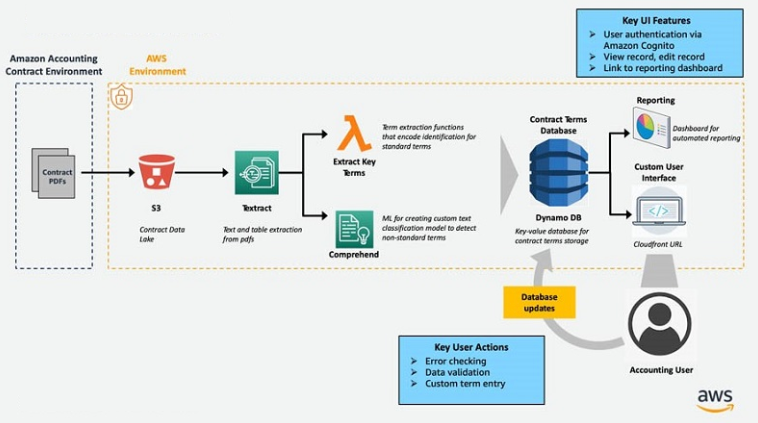
Improve customer interactions
Customer interactions are an important component of business success. You can combine Lex with Kendra to build intelligent chatbots for real-time customer support. These both can provide instant answers to natural language queries, searching across various document types and data sources.
Example use case: The following diagram illustrates the architecture and workflow for conversational customer self-service.

Mitigate Fraud and speed up identity verification
Identity theft and false impersonation can cause financial loss, reputational damage, and legal problems for businesses. You can integrate Rekogition with other AWS services to analyze transactional data and customer identity documents and flag suspicious activities in sectors like banking, e-commerce, and insurance.
Example use case: The following diagram illustrates the architecture and workflow for implementing identity verification.
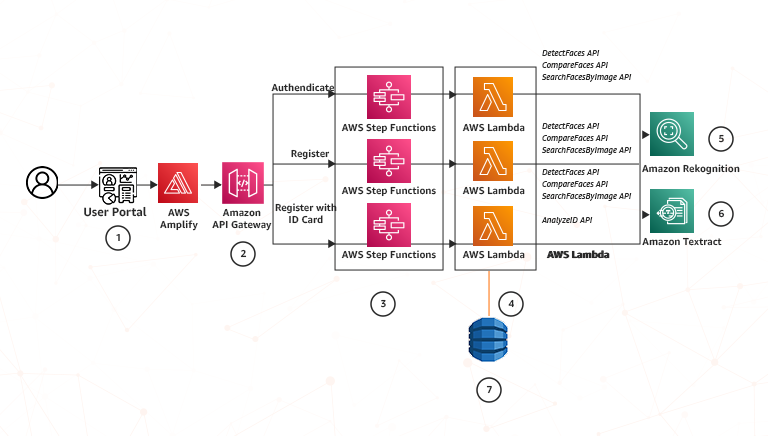
Create Multilingual Video Content for Global Audiences
In an increasingly globalized world, organizations need multilingual support to expand their global reach and meet the needs of different markets. You can use Polly with other AWS services to create multilingual support.
Example use case: The following diagram illustrates the architecture and workflow for video auto-dubbing for multi-lingual movie audiences.
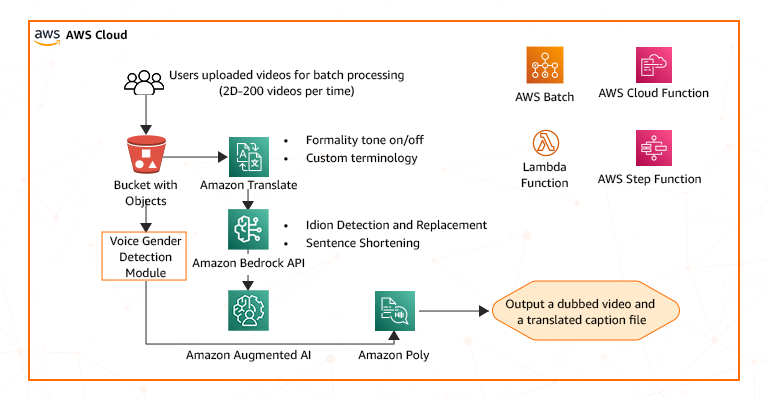
Exam Tips
The exam is practitioner-level; however, it’s not an entry-level exam. It covers a broad knowledge of AWS AI services, even though it doesn’t go deep into coding or data engineering. So at least six months exposure to AWS technologies will help you pass the exam.
- Basic AI concepts and terminologies
- The different stages of the ML pipeline
- AWS AI/ML/gen AI Services and applications
- SageMaker capabilities
- Recognize use cases
- Understand advantages and limitations
- Identify business metrics such as efficiency, accuracy, cross-domain performance, conversation rate
- Prompt engineering for foundational models and lifecycle of an gen-AI model
- Building secure and responsible AI
Practicing the different question patterns will help you answer any question. The exam includes the following question types:
- Multiple choice
- Multiple responses
- Ordering
- Matching
- Case Study
The last three question types are the latest additions to AWS question formats. For information, see the exam guide.
Final thoughts
As AI systems have become omnipresent, our understanding of how AI is built, how it performs, and the limitations it faces will help us set realistic goals and expectations from AI systems. The AWS AI Practitioner(AIF-C01) makes the ideal springboard into AI and ML world. AWS AI services streamline the entire ML lifecycle with no code or minimal code. These low-code platforms make AI learning approachable even for novices, and the intuitive interfaces make hands-on practice easy and engaging.
Continuous learning is not only the key to thriving in technology but also the door to unknown opportunities. With the AIF-C01 certification under your belt, you become an AI early adopter who can contribute to AI initiatives within their organizations.